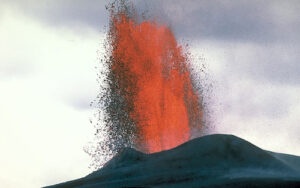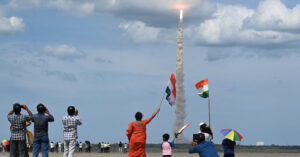Table of Contents
Introduction:
Birds are flying, warm blooded vertebrates that have more than 10,400 species that fall under the class Aves. They have two eyes, a four-chambered heart like human beings and forelimbs modified into feathery wings. Birds use their forelimbs for flying purpose and hind limbs for resting or perching. Birds lay hard shelled eggs that need warm conditions to hatch.
Even with such a large number of species, there are approximately 1000 extinct species of birds acquired from fossils. With such a large variety of species, all birds produce a single celled egg, incubate, hatch and later join the adult birds group. Some birds even migrate during their life cycle. Let’s look at the different stages in the life cycle of a bird.
Life Cycle of a Bird:
1) The Egg – Stage 1 –
All birds begin their lives inside an egg; mostly white, yellow, hard shelled covering outside the growing bird embryo. The number of eggs laid and the size of eggs vary from one species to another. Some birds lay one egg while other birds lay more than one egg. A bird called Grey Partridge is known to lay around 20 eggs. The eggs are incubated by one of the parent birds, for the embryo to develop into a chick. A hard, bony structure forms on the baby bird’s beak, which is called the egg tooth. In order to hatch, the baby bird uses the egg tooth to break the egg shell.
2) The Hatching – Stage 2 –
After the bird has come out of the egg, the newly hatched bird is called a hatchling. A hatchling is covered in soft features and is unable to fly in this stage. Due to its helpless nature, a hatchling becomes prey to many large predators. They need extreme parental supervision to develop and grow in this stage. When a hatchling is growing and fed by parents inside the nest, it is called nestling.
3) The Nestling – Stage 3 –
In this stage, the bird tries to fly and shows certain flight characteristics. When a nestling develops its flight abilities and is prepared to take its first flight, the bird is called a fledgling.
4) The Fledgling – Stage 4 –
A fledgling has fully grown feathers and strong muscle wings. Even though they have all these features, fledglings are still under the care of their parents for sometime. In this stage the bird flies out of the nest but not long distances. The time period of this stage in birds varies from one stage to another.
5) The Juvenile – Stage 5 –
Juvenile birds leave the nest and are independent to fly. In this stage, the juvenile bird undergoes its first plumage and looks closer to an adult bird. A plumage is the layer of feathers that covers the exoskeleton of a bird. The juvenile birds are incapable of breeding in this stage. The plumage in this stage is soft and gets replaced after phases of molting.
6) The Sub Adult – Stage 6 –
In this stage, the young birds are still not fully developed as they do not have adult plumage. In this stage the young birds are not sexually mature as well. Again this varies, depending on the kind of species of birds. Some bird species sexually mature in this stage, while some do not.
7) The Adult – Stage 7 –
The adult bird has definitive plumage and is sexually mature. In this stage, the bird is able to mate and perform breeding.
Conclusion:
From melodious hummingbird to flamingoes, birds are the most beautiful and intriguing species in the world. They reside in every nook and corner of the world as they survive in any harsh conditions. From frozen landscapes of Antarctica to humid forests of South America, birds exist in all parts of the world.
Frequently Asked Questions on Bird Life Cycle
Do all birds migrate?
Not all birds migrate. The birds who do not migrate are called sedimentary birds. Birds like Swallows migrate often while birds like Partridges do not migrate.
How do birds sing?
Not all birds sing, but make sound with the organ syrinx. The syrinx is situated at the top of the bird’s windpipe. Air coming from the windpipe makes vibrations and produces sound.
Are birds smart?
Studies have shown that parrots, crows, jays, rooks and ravens are amongst the smartest birds in the world.





